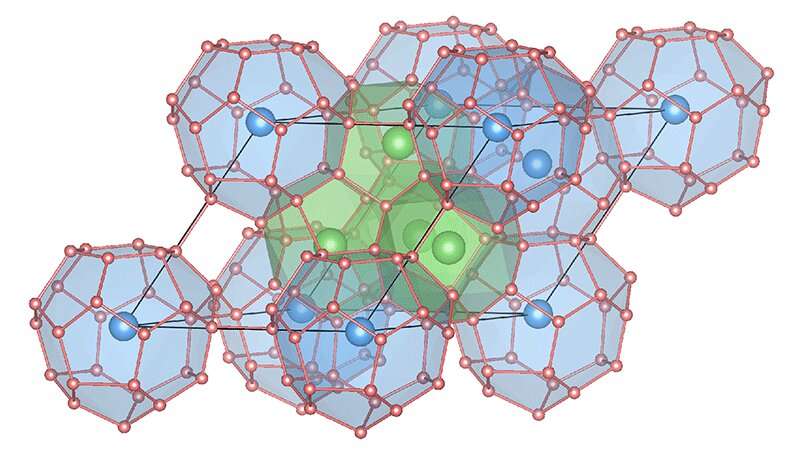August 27, 2019 report
Prediction: Hydride compound should be superconductive at high temperature and pressure

A team of researchers at Jilin University has calculated that a certain hydride compound should be superconductive at high temperature and under very high pressure. In their paper published in the journal Physical Review Letters, the group describes the work they did that led to their theory.
For over 100 years, scientists have been intrigued by the possibility of using superconductive materials in real-world products. Such materials would solve heat problems with electronic devices and would also make them far more efficient than those available today. Unfortunately, scientists have not been able to find a material that superconducts at room temperature and ambient pressure. Most materials tested thus far become superconductive at extremely low temperatures, limiting their use in a commercial product.
In recent years, researchers have found materials that become superconductive at high temperatures. Most are hydrides, which, as their name suggests, are materials rich in hydrogen—mostly binary compounds. In this new effort, the researchers bucked the trend of finding superconducting hydrides via experimentation in the lab—instead, they have developed a theory that suggests a ternary hydride Li2MgH16 should become superconducting at a temperature of approximately 473 K and pressure of 250 GPa. The researchers note that in their theory, Li2MgH16 can actually be considered as a binary hydride (MgH16) that has been doped with lithium to serve as an electron donor. Without the lithium, the hydride would simply break down into H2 when exposed to high pressure.
Notably, the work by the team in China is purely theoretical—they have made no effort to create and test their ideas. This is because the pressure required to make the material transition to superconducting would be difficult to achieve—it is close to that found at the Earth's core. But the work does represent a change in approach to finding a material that superconducts at room temperature and ambient pressure—using theory and math. They suggest their work shows that conventional physics tools such as density-functional theory calculations can be used in the search, speeding up the process and perhaps the eventual discovery of truly usable superconducting materials.
More information: Route to a Superconducting Phase above Room Temperature in Electron-Doped Hydride Compounds under High Pressure, Physical Review Letters (2019). journals.aps.org/prl/abstract/ … ysRevLett.123.097001
Journal information: Physical Review Letters
© 2019 Science X Network




















